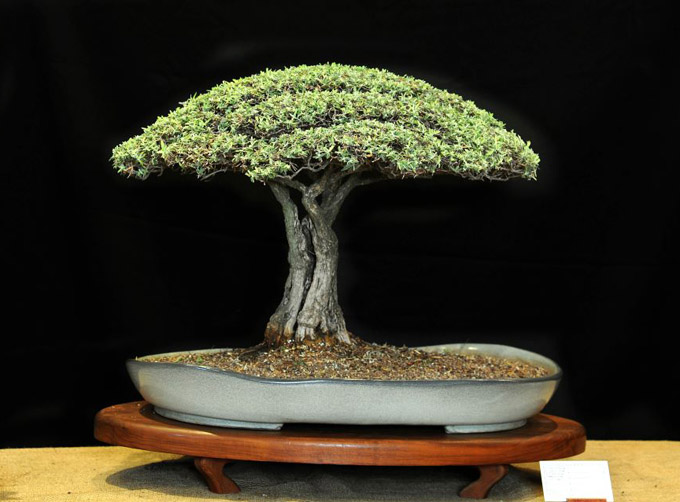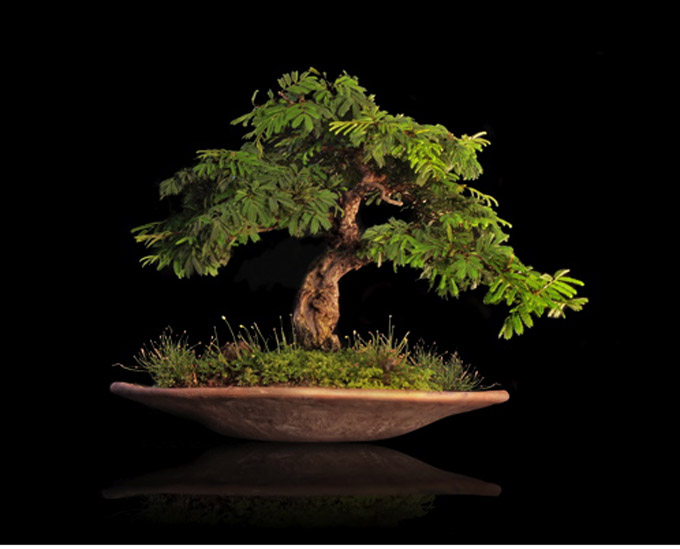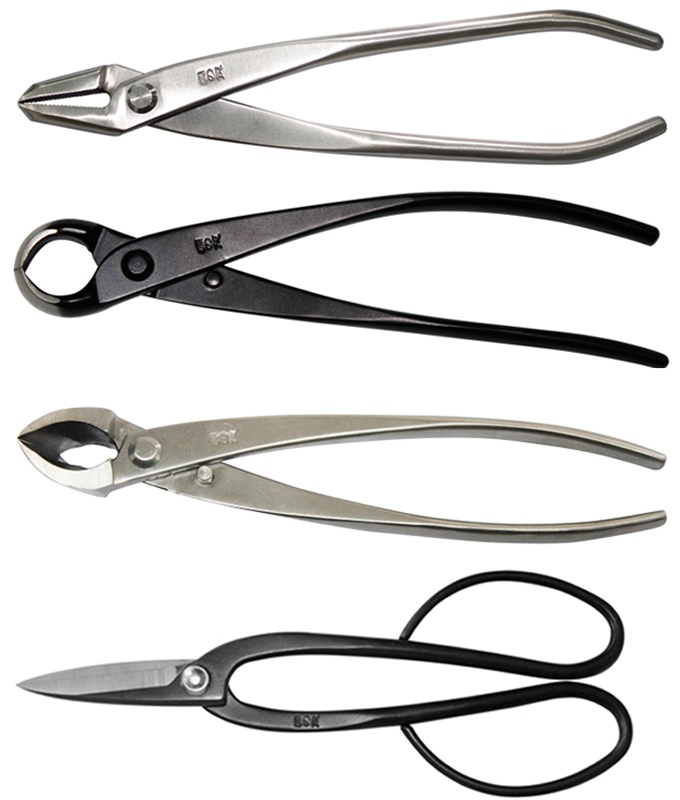 Sculpture. What comes to mind when I look at this manicured Buddleja is ‘sculptural bonsai.’ Though I don’t think it would ever be admitted to Kokufu-ten (Japans most famous bonsai exhibition) I do think it has something going for it. I especially like the wavy pot and the fluid split trunk (or is that two trunks?). It’s from Higurashi Jardineria Creativa on facebook. Here’s their website.
Sculpture. What comes to mind when I look at this manicured Buddleja is ‘sculptural bonsai.’ Though I don’t think it would ever be admitted to Kokufu-ten (Japans most famous bonsai exhibition) I do think it has something going for it. I especially like the wavy pot and the fluid split trunk (or is that two trunks?). It’s from Higurashi Jardineria Creativa on facebook. Here’s their website.
Take a look. Have you seen this video yet? If you haven’t, or even if you have, take a look. And then sign up for the 3rd U.S. National Bonsai Exhibition.
 Simplicity. Here’s another sweet tree from Higurashi Jardinera Creativa. Aside from being something within the reach of us ordinary bonsai enthusiasts, what strikes me about this one is the way the soft somewhat shaggy foliage and the soft somewhat shaggy moss play together.
Simplicity. Here’s another sweet tree from Higurashi Jardinera Creativa. Aside from being something within the reach of us ordinary bonsai enthusiasts, what strikes me about this one is the way the soft somewhat shaggy foliage and the soft somewhat shaggy moss play together.
Like butter. Have you seen our new Stone Lantern-Corex bonsai tools? We sell them and I like them. Though where there’s money involved, hype soon follows, still, I think that these are the best tools for the price that you’ll find anywhere. They look good, they feel good, and they cut like butter.

The Buddleja has a wonderful trunk and decent nebari, more natural and what I see in nature than the massively obese trunks/nebari I have seen in recent shows. However my taste in bonsai does not run toward topiary umbrellas. It needs some irregularity in that canopy to look natural and there is none there.
The other shaggy tree is delightful.
Hi Zack, I agree with your comments about the tree requiring a bit more irregularity in the canopy. While ‘umbrella’ style might not appeal to all I think (from looking at the Higurashi Jardinera Creativa site) that this tree was styled along the lines of works of the late Louis Nel from South Africa – see some examples on his tribute blog site at http://rememberlouis.wordpress.com/ Louis visited my bonsai garden in 2004 when he was here in Australia demonstrating at our National Bonsai Convention. I can almost hear him now explaining that maybe some giraffes had styled this tree :-) …. So maybe the solution is for the giraffes to take some bigger bites out of the smooth canopy.
For Wayne – thanks for this post – it was a reminder for me to revisit Louis’ tribute blog again and remember a good bonsai friend.
regards from ‘Down Under’ Australia
Louis Nel, to whom the tree belongs was killed about a year ago by a drunk driver whilst jogging. His collection of trees is somehow going lost. They are not being looked after by bonsai-experts and that is truly a loss. Some of his trees can be seen at The University of Stellenbosch in their botanical garden. Louis had a very nice collection of trees and was always testing the margins of what was average. He was a dedicated and clever bonsai-grower. He was magic on the stage, working on and explaining trees. I salute him and his work.
I’ve seen the tree many times. I agree that the topiary effect loses me and (difficult to see) the shari work was simply smoothing and polishing of the wood . I would have liked to see that improved, though Buddlejas have a serious tendency to have the dead wood rot away. Ask any South Africans who have worked with them. It rots from within till everything simply crumbles away. I have not been convinced by any method of preservation and I have, for that reason, stopped working with Buddlejs.
Nonetheless: a stunning work.
Have you tried “Gits Rot”… here in the US it is a penetrating epoxy hardener used to stabilize wood damaged by constant water exposure and/or termites. Found in marine supply stores- used primarily in boat repair.
Thanks again Zack and thanks also to Frank for your ‘value added’ comments.
Hi Pieter,
That’s terrible news. I’m sorry for Louis and his family.
The news about the lack of care of some of his trees is also disturbing, though it is good to know that some are being cared for.
Hi Jim,
Thanks for the tip. And no, I haven’t tried it. So far, it has been just lime sulfur for me.
Thanks, Jim.I will be looking for the Gits Rot.